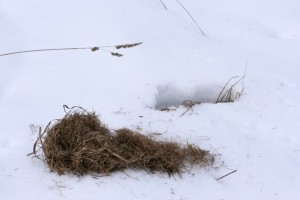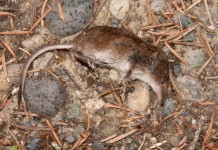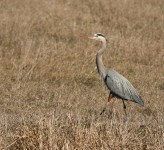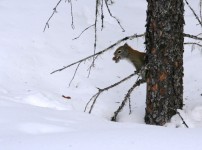Scurrying around underground, in meadows and through leaf litter are several small, furry mammals. Last week, I wrote about the mice found in North Idaho and this week, I’ll focus on the voles and lemmings.
There are five native species of voles in North Idaho and one species of lemming: southern red-backed vole, western heather vole, meadow vole, long-tailed vole, water vole and northern bog lemming. Identifying individual vole species can be very difficult.
Voles and lemmings are grouped together in the same family and both are stocky-bodied and short-tailed with ears more or less concealed in their fur. Bog lemmings look like voles with really short tails.
Compared to mice whose tails are almost the same length as their body, the tail of a vole is considerably shorter. The southern red-backed vole’s tail extends about 1.5 inches from its four-inch body. Voles and lemmings are also typically darker colored than deer mice.
Voles are active throughout the day because they feed on low-energy food that requires frequent eating. Voles and lemmings are primarily herbivores, foraging on fungi, seeds, nuts, berries, lichen, bark, green vegetation and roots depending on what is available in their habitat.
The habitats that voles occupy in North Idaho include damp forests with fallen logs, mountain meadows, clear-cuts, bogs, alpine areas, grassy areas, brushy areas, and along streams and ponds.
Meadow voles are the most common vole in North Idaho and the most widespread vole in North America. Signs of meadow voles, like most other voles, are more common than seeing the vole itself.
Meadow voles create runways through grassy areas and leave piles of cut stems along the runways. The runways are especially visible after the snow melts since voles remain active in the subnivian zone (insulated layer between the ground and snow). Their globular nests of grass constructed in the subnivian zone are also revealed when the snow melts.
Meadow voles make air holes (roughly one-inch in diameter) up to the snow’s surface to allow carbon dioxide to escape from their subnivian tunnels. These air holes don’t have tracks leading up to them on the surface but meadow voles do travel on the snow’s surface and leave tracks.
One aptly-named vole is the water vole which swims well and burrows into banks above and below the water level. Look for water voles along streams and ponds through alpine and subalpine meadows.
Less common than voles are bog lemmings. The northern bog lemming has almost no tail (it is three-quarters-of-an-inch long) and its body is nearly four inches long.
Northern bog lemmings are found in bogs, wet meadows, alpine tundra or openings in forests. Bog lemmings create runways on the surface like meadow voles and they dig shallow burrows underground. They also live in the subnivian zone in the winter.
Despite the differences between mice, voles and lemmings, they share the same rung on the food chain as an important food source for many predators, including weasels, foxes, owls, raptors, bobcats and coyotes. On the other hand, shrews have very few predators because of a special characteristic which will be revealed in next week’s column covering the last small, furry mammal.





